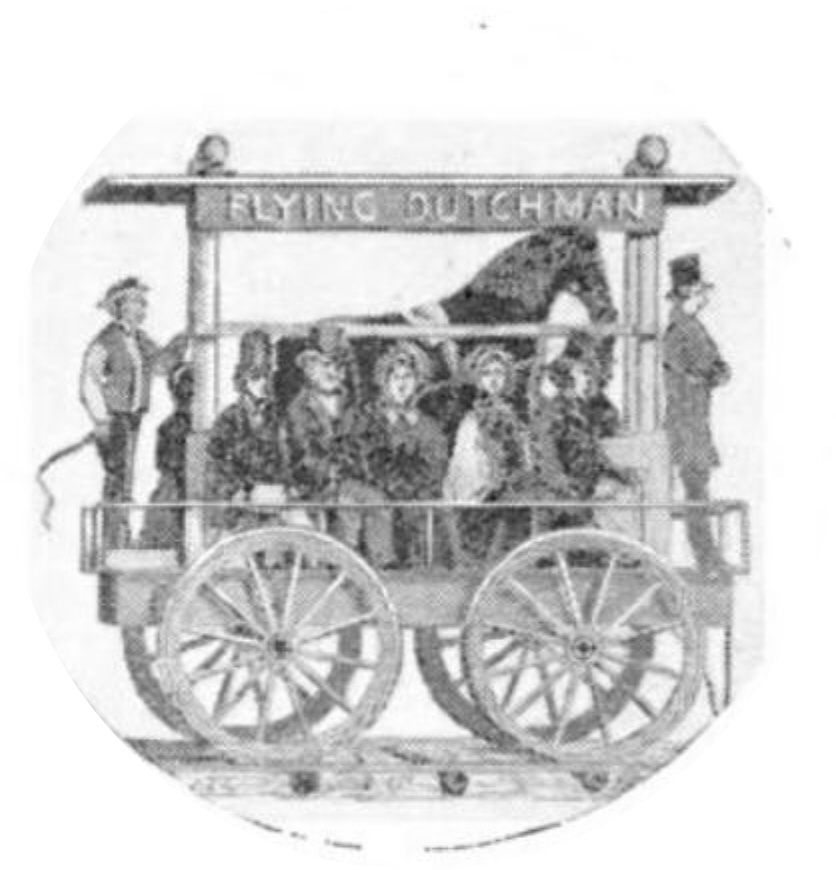Cycloped on:
[Wikipedia]
[Google]
[Amazon]
''Cycloped'' was an early horse-powered
 Horse locomotives were only used for a brief period between the development of passenger-carrying public railways and the provision of viable steam locomotives. Other horse-powered locomotives include the '' Flying Dutchman'' of the South Carolina Canal and Railroad Company, used briefly in 1830, and the '' Impulsoria'', exhibited at the
Horse locomotives were only used for a brief period between the development of passenger-carrying public railways and the provision of viable steam locomotives. Other horse-powered locomotives include the '' Flying Dutchman'' of the South Carolina Canal and Railroad Company, used briefly in 1830, and the '' Impulsoria'', exhibited at the
locomotive
A locomotive or engine is a rail transport vehicle that provides the Power (physics), motive power for a train. If a locomotive is capable of carrying a payload, it is usually rather referred to as a multiple unit, Motor coach (rail), motor ...
, built by Thomas Shaw Brandreth
Thomas Shaw Brandreth, FRS (24 July 1788 – 27 May 1873) was an English mathematician, inventor and classicist.
Early life and education
Brandreth was the son of a Cheshire physician, Joseph Brandreth. He studied at Eton and received a BA ...
of Liverpool, which competed unsuccessfully in the Rainhill trials of October 1829.
The Rainhill trials
The ''Cycloped'' was the only entry in the trials that did not rely onsteam power
A steam engine is a heat engine that performs mechanical work using steam as its working fluid. The steam engine uses the force produced by steam pressure to push a piston back and forth inside a cylinder. This pushing force can be trans ...
, instead utilising a treadmill that was kept continually moving by a horse mounted on top.
Brandreth was one of the directors of the railway and some people believed that that gave the ''Cycloped'' an unfair advantage. But the ''Cycloped'' was a primitive idea and because of its failure to generate enough speed to equal its competitors—Burstall's ''Perseverance'', Braithwaite's ''Novelty'', Hackworth's '' Sans Pareil'' and Stephenson's ''Rocket''—the ''Cycloped'' ultimately lost the competition in the trials."The Rainhill Locomotive Trials of 1829" by C F Dendy Marshall, published in the Transactions of the Newcomen Society, 1929 Vol 9. Stephenson's ''Rocket'' eventually won the trials, maintaining an average speed of for a modest consumption of coal and water.
Dandy wagons
Horses had been used to pull wagons on coal and mineral tramways and plateways for some years before this. Many of these tramways and plateways were arranged so that the line ran downhill from the mine to a river or coastal port. Loaded trains would descend under the power of gravity, with horses used to haul the empty trains back uphill. Early examples with just one or two wagons together were pulled downhill by the horse, the horse also acting as brakes. Once improved mechanical brakes were available, longer trains of wagons could be controlled during their descent. The horses were carried downhill in a special dandy wagon, usually attached to the end of the run of loaded wagons. These dandy wagons were simple unpowered wagons, often with no more adaptation for horses than special doors to load and unload the animals.Other horse locomotives
 Horse locomotives were only used for a brief period between the development of passenger-carrying public railways and the provision of viable steam locomotives. Other horse-powered locomotives include the '' Flying Dutchman'' of the South Carolina Canal and Railroad Company, used briefly in 1830, and the '' Impulsoria'', exhibited at the
Horse locomotives were only used for a brief period between the development of passenger-carrying public railways and the provision of viable steam locomotives. Other horse-powered locomotives include the '' Flying Dutchman'' of the South Carolina Canal and Railroad Company, used briefly in 1830, and the '' Impulsoria'', exhibited at the Great Exhibition
The Great Exhibition of the Works of Industry of All Nations, also known as the Great Exhibition or the Crystal Palace Exhibition (in reference to the temporary The Crystal Palace, structure in which it was held), was an International Exhib ...
in 1851.
References
{{reflist Rainhill Trials locomotives Liverpool and Manchester Railway locomotives Individual locomotives of Great Britain